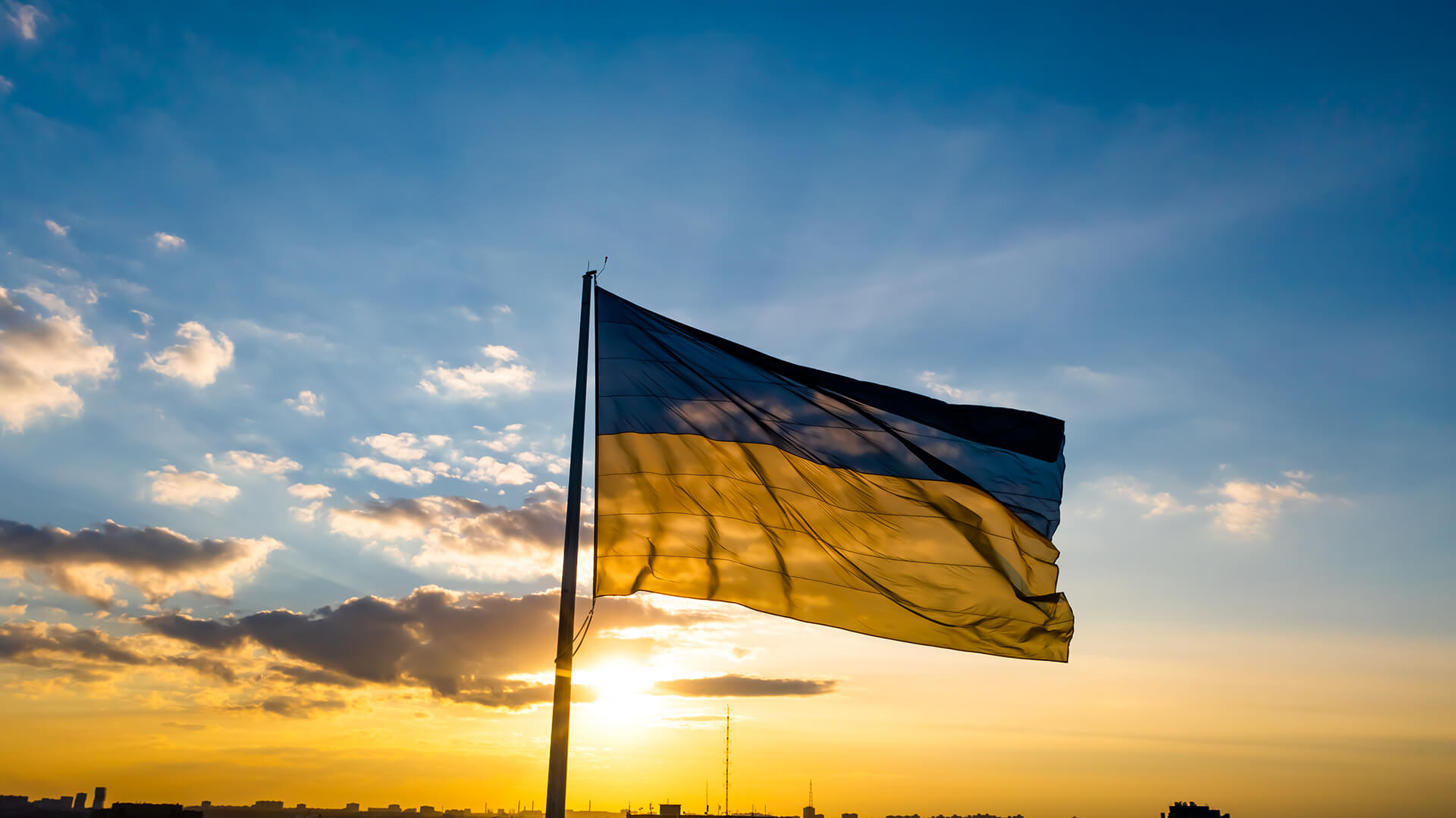On April 21, US President Joe Biden announced new shipments of weapons to Ukraine. These would cost US taxpayers $800 million. On April 25, Secretary of State Antony Blinken and Secretary of Defense Lloyd Austin announced over $300 million of more military aid. The United States has now spent $3.7 billion on weapons for Ukraine since the Russian invasion, bringing the total US military aid to Ukraine since 2014 to about $6.4 billion.
The top priority of Russian airstrikes in Ukraine has been to destroy as many of these weapons as possible before they reach the frontlines of the war. Therefore, it is not clear how militarily effective these massive arms shipments really are. The other leg of US “support” for Ukraine are economic and financial sanctions against Russia, whose effectiveness is also highly uncertain.
UN Secretary General Antonio Guterres is visiting Moscow and Kyiv to try to kick start negotiations for a ceasefire and a peace agreement. Since hopes for earlier peace negotiations in Belarus and Turkey have been washed away in a tide of military escalation, hostile rhetoric and politicized war crimes accusations, Guterres’ mission may now be the best hope for peace in Ukraine.
This pattern of early hopes for a diplomatic resolution that are quickly dashed by a war psychosis is not unusual. Data on how wars end from the Uppsala Conflict Data Program (UCDP) make it clear that the first month of a war offers the best chance for a negotiated peace agreement. That window has now passed for Ukraine.
An analysis of the UCDP data by the Center for Strategic and International Studies (CSIS) found that 44% of wars that end within a month conclude with a ceasefire and peace agreement rather than the decisive defeat of either side. This percentage decreases to 24% in wars that last between a month and a year. Once wars rage on into a second year, they become even more intractable and usually last more than ten years.
CSIS fellow Benjamin Jensen, who analyzed the UCDP data, concluded, “The time for diplomacy is now. The longer a war lasts absent concessions by both parties, the more likely it is to escalate into a protracted conflict… In addition to punishment, Russian officials need a viable diplomatic off-ramp that addresses the concerns of all parties.”
To be successful, diplomacy leading to a peace agreement must meet five basic conditions:
First, all sides must gain benefits from the peace agreement that outweigh what they think they can gain by war.
US and allied officials are waging an information war to promote the idea that Russia is losing the war and that Ukraine can militarily defeat Russia, even as some officials admit that such a war could last several years.
In reality, neither side will benefit from a protracted war that lasts for many months or years. The lives of millions of Ukrainians will be ruined. Russians face the specter of another Afghanistan-style military quagmire, as the Soviet Union and, more recently, the US experienced in Afghanistan.
In Ukraine, the basic outlines of a peace agreement already exist. They are fourfold. First, Russian forces withdraw from Ukraine. Second, Ukraine promises neutrality and becomes an independent buffer state between NATO and Russia. Third, all Ukrainians get the right of self-determination, including those in Crimea and Donbas. Finally, all parties conclude a regional security agreement that protects everyone and prevents new wars.
Both sides are essentially fighting to strengthen their hand for concluding an eventual agreement along the above lines. How many people must die before the details can be worked out across a negotiating table instead of over the rubble of Ukrainian towns and cities?
Second, mediators must be impartial and trusted by both sides.
The US has monopolized the role of a mediator in the Israeli-Palestinian crisis for decades, even as it openly backs and arms one side and abuses its UN veto to prevent international action. This has been a transparent model for endless war.
Turkey has so far acted as the principal mediator between Russia and Ukraine, but it is a NATO member that has supplied drones, weapons and military training to the latter. Both sides have accepted Turkey’s mediation, but can Turkey really be an honest broker?
The UN could play a legitimate role, as it is doing in Yemen, where the two sides are finally observing a two-month ceasefire. But even with the UN’s best efforts, it has taken years to negotiate this fragile pause in the war.
Third, the agreement must address the main concerns of all parties to the war.
In 2014, the US-backed overthrow of the elected Ukrainian government and the massacre of protesters in Odessa led to declarations of independence by the Donetsk and Luhansk People’s Republics. The first Minsk Protocol agreement in September 2014 failed to end the ensuing civil war in Eastern Ukraine. A critical difference in the Minsk II agreement in February 2015 was that representatives of the breakaway Donetsk and Luhansk republics were included in the negotiations, and the agreement succeeded in ending the worst fighting and preventing a major new outbreak of war for 7 years.
There is another party that was largely absent from the negotiations in Belarus and Turkey: the women of Russia and Ukraine, who make up half the population of both countries. While some women are fighting, many more can speak as victims of and refugees from a war unleashed mainly by men. The voices of women at the table would be a constant reminder of the human costs of war and that the lives of women and children are at stake.
Even when one side militarily wins a war, the grievances of the losers as well as unresolved political and strategic issues often sow the seeds of future wars. As Jensen of CSIS suggested, the desires of US and Western politicians to punish and gain strategic advantage over Russia must not be allowed to prevent a comprehensive resolution that addresses the concerns of all sides and ensures a lasting peace.
Fourth, there must be a step-by-step roadmap to a stable and lasting peace that all sides are committed to.
The Minsk II agreement led to a fragile ceasefire and established a roadmap to a political solution. But the Ukrainian government and parliament, under first Petro Poroshenko and then Volodymyr Zelensky, failed to take the next steps that Poroshenko agreed to in Minsk in 2015. These included passing laws and bringing constitutional changes to permit independent, internationally-supervised elections in the breakaway republics of Donetsk and Luhansk, along with autonomy within a federalized Ukrainian state.
Now that these failures have led to Russian recognition of the Donetsk and Luhansk People’s Republics’ independence, a new peace agreement must revisit and resolve their status, and that of Crimea. The agreement must do so, in ways that all sides will be committed to, whether that is through the autonomy promised in Minsk II or formal, recognized independence from Ukraine.
A sticking point in the peace negotiations in Turkey was Ukraine’s need for solid security guarantees to ensure that Russia won’t invade Ukrainian territory again. The UN Charter formally protects all countries from international aggression, but it has repeatedly failed to do so when the aggressor wields a veto in the Security Council. So how can a neutral Ukraine be reassured that it will be safe from attack in the future? And how can all parties be sure that the others will stick to the agreement this time?
Fifth, outside powers must not undermine the negotiation or implementation of a peace agreement.
Although the US and its NATO allies are not active warring parties in Ukraine, their role in provoking this crisis through NATO expansion and the 2014 Ukrainian uprising, supporting Kyiv’s abandonment of the Minsk II agreement and flooding Ukraine with weapons, make them an “elephant in the room” that will cast a long shadow over the negotiating table, wherever that is.
In April 2012, Kofi Annan, former UN secretary general, drew up a six-point plan for a UN-monitored ceasefire and political transition in Syria. But at the very moment that the Annan plan took effect and UN ceasefire monitors were in place, the US, NATO and their Arab monarchist allies held three “Friends of Syria” conferences, where they pledged virtually unlimited financial and military aid to the Al Qaeda-linked rebels they were backing to overthrow the Syrian government. This encouraged the rebels to ignore the ceasefire, and led to another decade of war for the people of Syria.
The fragile nature of peace negotiations over Ukraine make success highly vulnerable to such powerful external influences. The US backed Ukraine in a confrontational approach to the civil war in Donbas instead of supporting the terms of the Minsk II agreement, and this has led to war with Russia. Now Turkey’s Foreign Minister, Mevlut Cavosoglu, has told CNN Turk that unnamed NATO members “want the war to continue,” in order to keep weakening Russia.
The time for peace is now.
How the US and its NATO allies act now and in the coming months will be crucial in determining whether Ukraine is destroyed by years of war, like Afghanistan, Iraq, Libya, Somalia, Syria and Yemen, or whether this war ends quickly through a diplomatic process that brings peace, security and stability to the people of Russia, Ukraine and their neighbors.
If the US wants to help restore peace in Ukraine, it must diplomatically support peace negotiations, and make it clear to its ally, Ukraine, that it will support any concessions that Ukrainian negotiators believe are necessary to clinch a peace agreement with Russia.
Whatever mediator Russia and Ukraine agree to work with to try to resolve this crisis, the US must give the diplomatic process its full, unreserved support, both in public and behind closed doors. It must also ensure that its own actions do not undermine the peace process in Ukraine as they did the Annan plan in Syria in 2012.
One of the most critical steps that US and NATO leaders can take to provide an incentive for Russia to agree to a negotiated peace is to commit to lifting their sanctions if and when Russia complies with a withdrawal agreement. Without such a commitment, the sanctions have no moral or practical value as leverage over Russia and are only an arbitrary form of collective punishment against its people, and against poor people everywhere who can no longer afford food to feed their families. As the de facto leader of the NATO military alliance, the US position on this question will be crucial.
So policy decisions by the US will have a critical impact on whether there will soon be peace in Ukraine, or only a much longer and bloodier war. The test for US policymakers, and for Americans who care about the people of Ukraine, must be to ask which outcome US policy choices are likely to lead to and ensure that they support a path to peace.
Will you support FO’s journalism?
We rely on your support for our independence, diversity and quality.
The views expressed in this article are the author’s own and do not necessarily reflect Fair Observer’s editorial policy.
Support Fair Observer
We rely on your support for our independence, diversity and quality.
For more than 10 years, Fair Observer has been free, fair and independent. No billionaire owns us, no advertisers control us. We are a reader-supported nonprofit. Unlike many other publications, we keep our content free for readers regardless of where they live or whether they can afford to pay. We have no paywalls and no ads.
In the post-truth era of fake news, echo chambers and filter bubbles, we publish a plurality of perspectives from around the world. Anyone can publish with us, but everyone goes through a rigorous editorial process. So, you get fact-checked, well-reasoned content instead of noise.
We publish 2,500+ voices from 90+ countries. We also conduct education and training programs
on subjects ranging from digital media and journalism to writing and critical thinking. This
doesn’t come cheap. Servers, editors, trainers and web developers cost
money.
Please consider supporting us on a regular basis as a recurring donor or a
sustaining member.
Will you support FO’s journalism?
We rely on your support for our independence, diversity and quality.







Comment